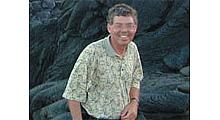FCC Proposes VHF Regulatory Fee Reduction

Doug Lung
The FCC has released a Notice of Proposed Rulemaking and Further Notice of Proposed Rulemaking (FCC 13-74) regarding the assessment and collection of regulatory fees. The good news for stations broadcasting on VHF channels is the FCC is going to eliminate the significantly higher fees for VHF stations. The bad news is it won't happen this year. The fees are based on the channel a TV station is transmitting on (the RF channel), not the virtual channel that appears on the TV and in the program guide.
Starting in 2014, TV station regulatory fees will still be based on market size, but the total cost will be spread equally among TV stations in the market regardless of what channel they’re transmitting on. This will raise the regulatory fees for UHF stations, but due to the fact that there are so many more of them, the increase should not be that great. Based on the proposed FY2013 fees for existing full-time employee (FTE) allocations prior to rounding in the top 10 TV markets, the FCC will need to collect $1,804,524 from the 22 stations transmitting in the VHF bands and $3,880,922 from the 109 stations transmitting on UHF frequencies. If all stations in those markets paid the same, the FY2013 fee would be $43,400 per station. Under this proposed FY2013 fee structure top 10 market stations transmitting on VHF allocations will pay $82,025 and those transmitting on UHF frequencies will pay $35,600.
The FCC explained the original reasons for the difference in fees between VHF and UHF stations in the NPRM. “Historically, analog VHF channels …have been coveted for their greater prestige and larger audience, and thus the regulatory fees assessed on VHF stations have been higher than the regulatory fees assessed for UHF …stations in the same market area. Conversely, [now] digital VHF channels are less desirable than digital UHF channels, and thus there may no longer be a basis on which to assess higher regulatory fees for VHF channels. Combining VHF and UHF into one fee category would eliminate the current fee disparity between UHF and VHF television stations. We propose that the UHF and VHF full service television station categories be combined into one fee category, divided into tiers based on market size, with one resulting rate.”
This Commission noted that it was seeking comment on this proposal.
Note that in the NPRM, the FCC is proposes to revise the full time employee allocations and cap fee rate increases to 7.5 percent prior to rounding. Under this plan, the Media Bureau allocation would increase from 30.2 to 33.33 percent, increasing the fees paid by broadcasters proportionally. The Wireless Telecommunications Bureau allocation would increase from 16.8 to 19.42 percent, increasing fees for licensees issued by that Bureau. The Wireline Competition Bureau allocation would drop from 46.7 to 41.26 percent (allowing fee increases to be capped) and the International Bureau allocation would drop slightly from 6.3 to 5.99 percent.
Satellite Earth station (both fixed and temporary fixed SNG) regulatory fees would drop from $275 to $265 under the unmodified allocations, and to $250 per license with the new allocation and cap. Broadcast auxiliary regulatory fees are unchanged at $10 under all proposed schedules. LPTV, FM/TV translator, Class A TV and booster fees would go up from $385 to $390 under the existing allocations and increase to $415 with the revised allocations and cap.
FM radio regulatory fees would stay about the same under the existing allocations but increase significantly under the revised allocations and 7.5 percent cap.
Remember that this is a proposed rulemaking and the final fees adopted late this summer could be different, depending on the comments. Comments are due June 19, 2013 with reply comments due June 26, 2013.
Get the TV Tech Newsletter
The professional video industry's #1 source for news, trends and product and tech information. Sign up below.
Doug Lung is one of America's foremost authorities on broadcast RF technology. As vice president of Broadcast Technology for NBCUniversal Local, H. Douglas Lung leads NBC and Telemundo-owned stations’ RF and transmission affairs, including microwave, radars, satellite uplinks, and FCC technical filings. Beginning his career in 1976 at KSCI in Los Angeles, Lung has nearly 50 years of experience in broadcast television engineering. Beginning in 1985, he led the engineering department for what was to become the Telemundo network and station group, assisting in the design, construction and installation of the company’s broadcast and cable facilities. Other projects include work on the launch of Hawaii’s first UHF TV station, the rollout and testing of the ATSC mobile-handheld standard, and software development related to the incentive auction TV spectrum repack. A longtime columnist for TV Technology, Doug is also a regular contributor to IEEE Broadcast Technology. He is the recipient of the 2023 NAB Television Engineering Award. He also received a Tech Leadership Award from TV Tech publisher Future plc in 2021 and is a member of the IEEE Broadcast Technology Society and the Society of Broadcast Engineers.

